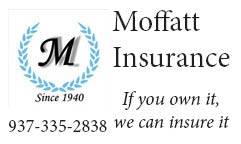Three projects that brought new life to buildings in Troy’s downtown area were certified in 2013 for tax abatement through the Downtown Community Reinvestment Area program.
The projects included the former Salvation Army building at 221 E. Main St., which was rehabbed by Troy Community Works, the CRA Housing Council heard during its annual review of abatement projects March 20.
The other projects were the building at 12 S. Market St., owned by Four Sons Development and now home to Up and Running, and a residential duplex at 16-18 S. Oxford St., owned and rehabbed by Ryan and Tara Custer.
Under the city CRA program, the amount a remodeling or new construction increases the market value of the structure is exempt from real property taxation for the stipulated time period of 10 to 12 years.
Gregg Harris of the city development department outlined the program and the specific projects before the housing council voted to continue the CRA exemptions.
More projects details shared included:
- 221 E. Main St.: This building had been condemned before its purchase and then rehab project by Troy Community Works, a not for profit community development organization. Work included a parking lot, building exterior (roof, windows, storm drain system, masonry), electric, plumbing and new restrooms among other projects.
The improvements cost $320,000. Phase two will be the building’s upstairs.
The first-floor space has two tenants: RT Industries and a chiropractic office.
- 16-18 S. Oxford St.: The previously vacant duplex is occupied following investment of $60,000 for new heating and cooling, windows, siding and soffits, electrical, plumbing, insulation and concrete work.
- 12 S. Market St. received $40,000 in improvements including first floor rehabilitation, and now is used by a successful business. The improvements increase the potential for occupying the upper floor, Harris said.
Harris pointed out that in the 30 years of the downtown CRA program, 45 projects totaling more than $5.2 million in new private investment have been completed.
The amount, however, “is a fraction of improvements downtown because more than one half investing in downtown didn’t file for abatement,” he said. Whether to file for abatement is the property owner’s choice.
In other business, the board discussed how word of the program is distributed.
Member Larry Smith suggested sending a postcard annually to downtown area property owners promoting the program. “It’s a good program for downtown Troy,” he said.


